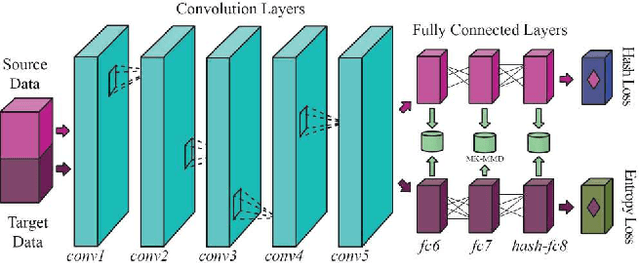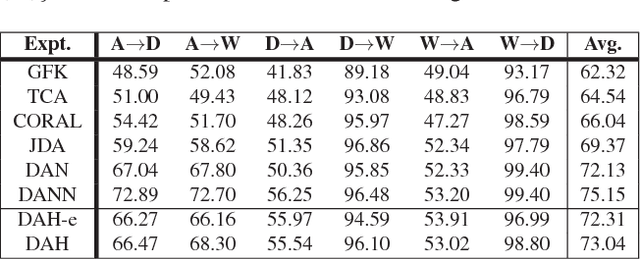Deep Hashing Network for Unsupervised Domain Adaptation
Paper and Code
Jun 22, 2017



In recent years, deep neural networks have emerged as a dominant machine learning tool for a wide variety of application domains. However, training a deep neural network requires a large amount of labeled data, which is an expensive process in terms of time, labor and human expertise. Domain adaptation or transfer learning algorithms address this challenge by leveraging labeled data in a different, but related source domain, to develop a model for the target domain. Further, the explosive growth of digital data has posed a fundamental challenge concerning its storage and retrieval. Due to its storage and retrieval efficiency, recent years have witnessed a wide application of hashing in a variety of computer vision applications. In this paper, we first introduce a new dataset, Office-Home, to evaluate domain adaptation algorithms. The dataset contains images of a variety of everyday objects from multiple domains. We then propose a novel deep learning framework that can exploit labeled source data and unlabeled target data to learn informative hash codes, to accurately classify unseen target data. To the best of our knowledge, this is the first research effort to exploit the feature learning capabilities of deep neural networks to learn representative hash codes to address the domain adaptation problem. Our extensive empirical studies on multiple transfer tasks corroborate the usefulness of the framework in learning efficient hash codes which outperform existing competitive baselines for unsupervised domain adaptation.
 Add to Chrome
Add to Chrome Add to Firefox
Add to Firefox Add to Edge
Add to Edge